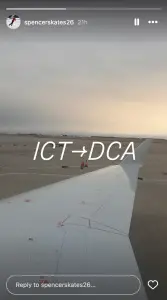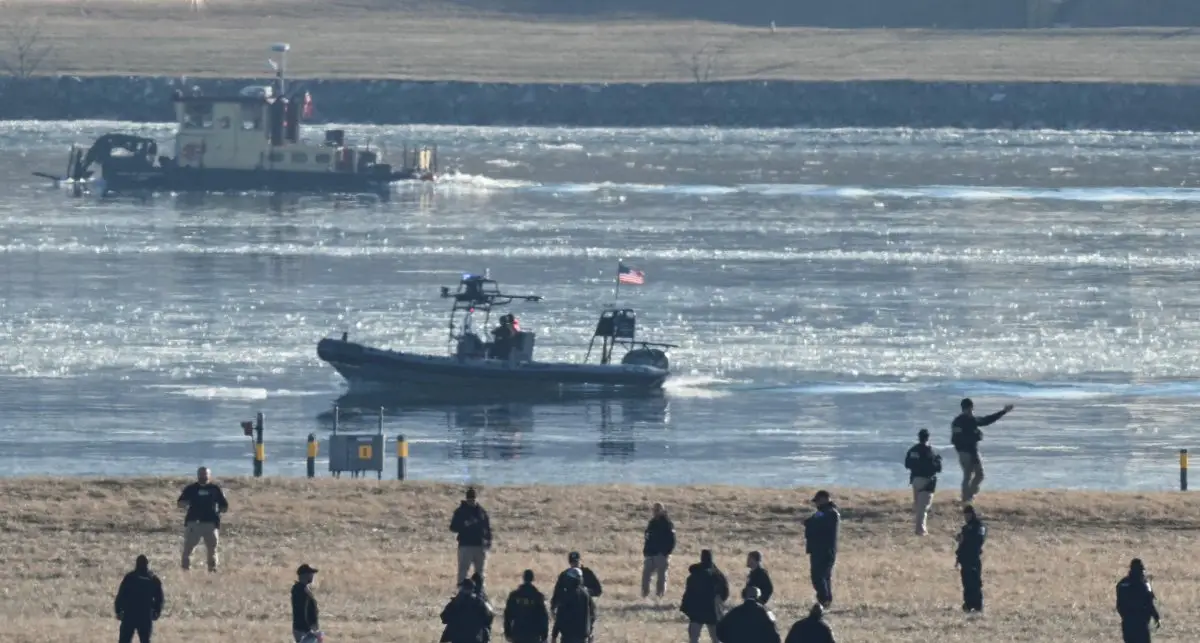Officials are still working to piece together the full details of the tragic midair collision that took the lives of more than 50 people in Washington D.C. on Wednesday night. While authorities continue their investigation into the causes of the crash, social media has provided a glimpse into the final moments of some of the passengers aboard the ill-fated flight.
A Tragic Journey
Among the passengers on American Eagle Flight 5342 was 16-year-old U.S. figure skater Spencer Lane. The young athlete had been attending a skating camp in Wichita, Kansas, and was on his way back to Washington D.C.’s Reagan National Airport when disaster struck. Lane had been documenting his trip on social media, and his final Instagram story post—a photo of the airport runway from his window seat—served as an eerie farewell. The caption simply read “ICT -> DCA,” referring to the airport codes for Wichita’s Dwight D. Eisenhower National Airport and Washington’s Reagan National Airport.
The flight was nearing its destination when, at approximately 9:00 p.m. ET, it collided midair with an Army helicopter. The catastrophic impact caused both aircraft to plummet into the frigid waters of the Potomac River. Initial rescue efforts soon transitioned into a recovery mission as authorities confirmed that no survivors were expected. The American Eagle flight was carrying 60 passengers and four crew members at the time of the crash. The military helicopter, which was reportedly on a routine training mission, had three people on board.
The Victims and Crew Members
Flight 5342 was piloted by Captain Jonathan Campos, 34, and First Officer Sam Lilley, 28. Also on board were flight attendants Ian Epstein and Danasia Elder, who had been assisting passengers when the tragic event occurred. Families, athletes, and business travelers alike filled the seats of the aircraft, many of whom had no idea that their lives would be cut short in an instant.
In the wake of the crash, tributes have poured in from across the country, particularly within the figure skating community. Lane’s fellow skaters, coaches, and supporters expressed their grief over the loss of such a promising young talent.
“It’s unimaginable,” said Lane’s coach, Thomas Gallagher. “Spencer was dedicated, hardworking, and had a bright future ahead of him. He had just finished a fantastic training session and was eager to showcase what he learned. This is heartbreaking.”
Federal Response and Political Fallout
The tragic incident has quickly become a subject of political debate. President Donald Trump addressed the nation on Thursday, offering condolences to the victims’ families while also assigning blame to past administrations.
“We must ensure that our aviation system meets only the highest safety standards,” Trump stated. “I made changes during my previous term that prioritized safety, but unfortunately, the policies of Obama, Biden, and their appointees weakened those standards.”
Trump specifically criticized former Transportation Secretary Pete Buttigieg and previous Democratic leadership, claiming their policies prioritized political agendas over safety. He also cited the ongoing federal hiring freeze, which he implemented upon returning to office on January 20, as a necessary measure to combat inefficiencies within aviation regulation agencies.

Air Traffic Control Shortages and Safety Concerns
One of the key issues under scrutiny following the crash is the ongoing shortage of air traffic controllers. Experts have long warned that the lack of trained professionals in control towers across the country could pose a risk to air travel safety. Some officials argue that staffing shortages contributed to the collision, while others believe the problem stems from broader systemic issues within the Federal Aviation Administration (FAA).
According to a recent report from the Government Accountability Office (GAO), the FAA has struggled to maintain a fully staffed workforce. The report found that the agency is operating with thousands of vacancies nationwide, with some of the busiest airports in the country experiencing significant understaffing.
A former FAA safety inspector, speaking on the condition of anonymity, warned that the agency’s lack of personnel and resources could lead to dangerous situations.
“We’ve been sounding the alarm for years. The aviation industry has seen remarkable technological advancements, but without enough trained air traffic controllers, it’s a recipe for disaster,” the former inspector explained.
The Role of Diversity Initiatives in the Debate
A controversial aspect of the debate surrounding aviation safety involves diversity, equity, and inclusion (DEI) initiatives. President Trump and several conservative commentators have suggested that recent DEI-focused hiring practices may have contributed to a decline in the overall quality of air traffic control professionals.
Critics argue that prioritizing diversity in hiring should not come at the cost of competency and training. However, aviation experts counter that DEI initiatives are not to blame for staffing shortages. Instead, they point to years of budget cuts, recruitment issues, and outdated training programs as the true culprits behind the crisis.
“The idea that diversity initiatives are somehow responsible for this tragedy is simply misleading,” said aviation analyst Lisa Montgomery. “The real issue is that we haven’t invested enough in proper training and recruitment strategies. If we want safer skies, we need to focus on funding and education.”
Ongoing Investigation and Next Steps
The National Transportation Safety Board (NTSB) has launched an extensive investigation into the collision. Officials will analyze flight data, air traffic control recordings, and eyewitness testimonies to determine the exact cause of the crash.
Preliminary reports suggest that miscommunication between air traffic controllers and the pilots may have played a role in the tragedy. Investigators are also examining the flight paths of both aircraft to understand how they ended up on a collision course.
Families of the victims are calling for accountability and sweeping reforms to prevent similar accidents in the future. Many have expressed frustration over what they perceive as a lack of urgency in addressing aviation safety issues.
“We can’t bring our loved ones back, but we can fight to make sure this never happens again,” said one grieving family member. “We need answers, and we need change.”
Conclusion
The Washington D.C. midair collision has sent shockwaves through the nation, prompting urgent discussions about aviation safety, regulatory oversight, and the impact of political policies on critical infrastructure. As investigators work to uncover the full details of the tragedy, one thing remains clear: the lives lost in this disaster must serve as a catalyst for meaningful change.

